- Home
- Bill Pronzini
Son of Gun in Cheek Page 9
Son of Gun in Cheek Read online
Page 9
The Case of the 16 Beans (1944)
A wacky will in which sixteen beans of various types and colors comprise the entire bequest from a rich eccentric, Balhatchet Barkstone, to his young nephew Boyce; a cryptic accompanying note written by Balhatchet urging Boyce to “find a good spot—the right soil, in short!—to plant all his beans in, where, growing simultaneously, they may grow him a valuable crop”; a crazy misunderstanding; a lecture at the Philosopher’s Club entitled “Continuation of Proclivities and Talent the Only True Basis for Calculating Legal Family Descendancy”; a copy of The Way Out, the book of Chinese aphorisms; another rich eccentric, Gilbert Parradine, owner of (among other things) the Parradine Moderne Motion Picture Theatre and the Parradine Tower; “the most diabolical and policeproof kidnap plot ever invented by gangsters”; a film starring a British comic named Broom Sherwood; a secondhand book-dealer, one Ochiltree Jark; a deceased upstate New York farmer who had such an anti-Chinese complex that he bought up dozens of Manhattan chop suey restaurants and canceled their owners’ leases, with the idea that the poor devils would then “go off and blow their brains out, or something”; an intellectual Chinese exlawyer who lost his legs in a train wreck, turned to selling shoestrings on the streets of Chicago, travels by means of a platform cart outfitted with “strange water-encased paddle-blades,” and is known as “Half-a-Chink, King of the Roller-Skating Rink”; a micro-brained, book-collecting dealer in animal hides called Hutchcock McDolphus; a European opera singer with a voice of “cool, molten gold”; a scientific specialist in beans, i.e., a “beanology professor”; the aforementioned Chinese fable entitled “The Murder of Chung Po: The First Detective Story”; the working out of what may well be the weirdest cryptogram ever invented in or out of fiction; a miraculous rescue utilizing the marquee of the Parradine Moderne Motion Picture Theater; and the revelation of a demented “family history” in which generations of Barks tone patriarchs bequeathed their male heirs increasingly more elaborate puzzles and cryptograms that the heirs must solve in order to “earn” the family fortunes.
The Marceau Case (1936), X. Jones of Scotland Yard (1936), The Wonderful Scheme of Mr. Christopher Thorne (1937)
This is the first of several multivolume Keeler “meganovels”—a tour-de-force that runs more than 1400 pages in its three volumes and that Nevins says is “beyond the slightest sliver of a doubt one of the great goofy masterpieces of world literature.” He’ll get no argument from me on that score.
All three books are based on a single “impossible” murder case, in which yet another rich eccentric, this one living in England and named Andre Marceau, is found strangled by an acid-soaked wire garrote in the middle of his newly rolled croquet lawn. His dying words were “The Babe from Hell!” which leads to the case being called the “Aeronautic Strangler-Baby Case.” Other salient facts: A stolen autogiro apparently piloted by a child was seen to hover over the Marceau house at the time of the murder (Marceau, who was an airplane enthusiast, had placed a fifteen-foot, red-neon-lighted arrow on his roof, pointing toward London); a set of tiny footprints leads up to and away from the body, but doesn’t reach the edge of the lawn; Marceau’s ascot had been removed and stuffed into his pocket, and smells oddly of fish; and many years before, Marceau had written a letter to the London Times advocating the extermination of all Lilliputians, i.e., dwarfs and midgets, because their genetic defect, “nanism,” would eventually cause the entire human race to shrink in size and thus all of mankind would be devoured by voracious insects.
The All-American Press Service, in the person of American detective and dissolute womanizer Alec Snide, embarks on a race against Scotland Yard sleuth Xenius Jones to solve the case. Snide wins out (sort of) in The Marceau Case by using his wits and by concocting an elaborate ruse to befuddle his opponent; Jones triumphs (sort of) in X. Jones of Scotland Yard by means of a fourth-dimensional method of detection he calls “Reconstruction of the Complete Invisible Stress-Pattern in a Medium Lying in a 4-Dimensional Continuum, by Analysis of the Surrounding Rimples.” Keeler spends a dozen pages explaining this theory, but most of the explanations seem to make little or no sense, and in fact appear to be written in a language only approximating English. Choctaw, perhaps, as the New York Times suggested?
These first two books in the trilogy/meganovel are comprised of literally hundreds of letters, telegrams, newspaper columns, photographs (one of a bare-breasted woman, another of Keeler himself), advertisements, cartoons, courtroom transcripts, and humorous booklets called “Chinaboy Chuckles.” The third entry, The Wonderful Scheme of Mr. Christopher Thorne, is done in “straight” narrative form and not only offers yet another explanation of the Marceau murder but also stops every so often, as Nevins says, “to interpolate a disquisition on Oriental philosophy, or a brain-teaser riddle on how to get oil, water and gas pipes into three adjacent houses while drilling no more than 18 holes and having no pipe cross over or under any other pipe.”
Among the solutions to the Aeronautic Strangler-Baby Case offered in the three novels are ones involving a cabal of enraged midgets plotting revenge against Marceau for his attack on Lilliputians, and the theory that Marceau was not murdered after all, but that he died of a rare hereditary disease called tetanoid epilepsy, imagined as he was expiring that an evil baby was flying the autogiro above his croquet lawn, and earlier placed the acid-dipped wire around his own neck as a home remedy to prevent a skin rash from spreading upward to his face. Among the strange characters who appear and disappear in astonishing ways are a religious cult of astro-extentionists (folks who believe you must never throw away anything left in a house by a previous owner or tenant), and a midget circus performer known variously as Little Lucas, Guy Ezekiah, Yogo Yakamura, The Juggling Jesus, and the Six-Toed Polish Dwarf.
So there you have Harry Stephen Keeler—or as much of him as I can give you in a single chapter in a single book. If you’d like to take a trip to Keelerland on your own, his books, though long out of print, can be found with a little diligence. But I warn you, just as Nevins and the eminent critic Will Cuppy warned me and others before me—a warning whose validity I can personally attest to.
Once you’ve spent a couple of hours with the Kracked King of Keelerland, you’ll never be quite the same again.
5
The Shame Of Black Mask, And Other Pulp Paydirt
The house was set far back from the road and heavily ambushed in shrubs and trees which formed the scheme of landscape decoration.
—Florence M. Pettee,
“The Clue from the Tempest,” 1921
Her eyes were kicking off sparks like the flint of an automatic lighter. . . . Her jaw line began to flex and I admired the firm, strong chin which she wore below the softness of her face. She had the sort of chin which goes with plenty of giblets.
—Michael Morgan,
“Charity Begins at Homicide,” 1950
During the period between the two world wars, and throughout the forties, pulp magazines ruled the popular fiction roost in this country. At the height of their popularity in the late thirties, there were more than two hundred different titles on the market—titles featuring action stories of mystery, detection, adventure, war on land and sea and in the air, life in the Old West, modern-day romance, sports, science fiction, fantasy, horror, and such esoteric interests as zeppelins, pirates, the Civil War, and railroading.
Pulp fiction, by its nature, was hastily produced by good writers and hacks alike in order to satisfy the annual demand for millions upon millions of words during the boom years. Some of it managed to be surprisingly good in spite of this. Most of it was either blandly mediocre or undistinguishedly bad. If you mine enough of it, though, you’re bound to find not only alternative nuggets but full-fledged (if miniature) alternative bonanzas. And as is the case with novels, you’re liable to find them in the damnedest places.
Black Mask, for instance.
Now Black Mask, as any pulp aficionado will tell you, was the crime de la crème
of the detective pulps. In addition to providing some of the best criminous short fiction by Dashiell Hammett, Raymond Chandler, Norbert Davis, Frederick Nebel, Horace McCoy, and a host of others, it was also—under the ten-year editorial reign of Joseph T. “Cap” Shaw—a pioneer publication in the development of the American school of realistic crime fiction. In his introduction to The Hard-Boiled Omnibus (1946), Shaw described this new style as “hard, brittle . . . a full employment of the function of dialogue, and authenticity in characterization and action. To this may be added a very fast tempo, attained in part by typical economy of expression.”
Those who believe that Black Mask was always a showcase for tough-guy writing are sadly mistaken, however. The magazine was founded in 1920 by, of all people, litterateurs H. L. Mencken and George Jean Nathan—primarily because they were co-owners and coeditors of The Smart Set, a glossy Jazz Age “magazine of cleverness” that was in constant financial straits. Mencken thought that by establishing “a new cheap magazine” he and Nathan could bail themselves out of debt. As it turned out, he was right. The first issue (April 1920) met with immediate favor from readers and led Mencken to comment a short while later, “Our new louse, The Black Mask, seems to be a success. The thing has burdened both Nathan and me with disagreeable work.” Still later he stated that Black Mask was “a lousy magazine—all detective stories. I heard Woodrow [Wilson] reads it.”
From 1920 to 1926, its contents pages featured an oddball combination of pallid drawing-room detective fiction, Western yarns, and adventure stories with exotic settings. Hammett’s first story (“The Road Home,” as by Peter Collinson) didn’t appear until December 1922; Carroll John Daly’s first hard-boiled Race Williams adventure, “Knights of the Open Palm,” wasn’t published until June 1923, four months before Hammett introduced the Continental Op. In June of 1921 what you had were stories by the likes of Hubert Roussel, Harold Ward, Vincent Starrett, John Baer, Gaius Drew, George Allen England, and Frederick Ames Coates—stories with such titles as “The Story-Book Clue,” ‘The Eyes in the Alley,” and “A Double-Barrelled Joke.”
What you also had was an alternative classic: “The Clue from the Tempest,” by Florence M. Pettee, the issue’s lead novelette.
Florence Mae, as we’ve already seen in Chapter 1, was a mistress of melodrama whose forte was silly situations, exotic pseudoscientific gimmicks, and a passionate misunderstanding of the proper usage of Webster’s Unabridged Dictionary and Roget’s Thesaurus. Her pulp fiction is even more redolent of these alternative essences than her lone novel, The Pal grave Mummy. One wonders, in fact, how she managed to convince any pulp editor of reasonable literacy to purchase one of her deformed little brainchildren. And yet she did, and with astounding regularity in the twenties and very early thirties. She was a frequent contributor to such magazines as Flynn’s, Detective Story, and Argosy All-Story Weekly and also appeared in numerous others. “The Clue from the Tempest” is the first of two of her stories to stain the pages of Black Mask in consecutive 1921 issues.
The editor who bought these two Pettee marvels was not, of course, Cap Shaw; she could not have sold Cap Shaw a story if she owned the magazine. Rather, it was one F. M. Osborne, who did not last long at the editorial helm for reasons which will become obvious. He was succeeded by George W. Sutton, who was in turn succeeded by Shaw in 1926.
Like The Palgrave Mummy, “The Clue from the Tempest” features Digby Gresham, “the master mind for the unentanglement of knotty mysteries,” also known as “a superman in seven-leagued boots.” But it is the narrator, a fellow named Brandon, who first stumbles on murder most foul at Clapham House, the estate of wealthy industrialist Robert Clapham; he immediately convinces everyone involved to call in Gresham ahead of the police. Our hero arrives, pokes around the corpse of beautiful young Avis Clapham with Sherlockian avidity, commandeers the kitchen for some scientific experiments, and essays such brilliant—and brilliantly skewed—deductions as: “Some one plunged [a] bloodstained knife several times into the earth to clean it. Some one stabbed that telltale blade five times into the soil in a furious desire to blot out any incriminating clue. And the last time the blade was plunged in, every trace of blood had been scoured off!” (Italics Florence Mae’s). How Digby is able to deduce, through scientific experimentation, that every trace of blood had been scoured off the knife when he doesn’t have the knife in his possession, nor has he ever laid eyes on the knife, is a feat of legerdemain even Houdini couldn’t have duplicated.
After this there is much pointless questioning, some pointless running around, a violent storm (or “tempest,” as Florence Mae prefers to call it), the discovery of the missing knife, which had been hidden inside a storm drain and was washed out by the storm (“the clue from the tempest”), and the revelation that the death of Avis Clapham was actually a suicide that her father tried to cover up for the good of the family name. It seems that the girl, like her mother before her, suffered from a mysterious petit mal that wasn’t so petit after all, and stuck herself when a “sudden attack of her mental trouble seized her” while she was outside looking at an “uncannily full” moon. A canny twist on the old werewolf theme, you will agree.
But as always with Florence Mae’s work, it is her off-the-wall prose that provides the most memorable moments in “The Clue from the Tempest.” First of all, some of the more interesting results of her constant and ill-advised communion with Webster’s and Roget’s:
Her eyes were as wide and basilisk as though she were a somnambulist, stunned to time and place.
Suddenly the [flashlight’s] powerful white circle with its livid eye swung in concentric circles away from the inert figure.
His fingers opened and closed spasmodically, and the whipcords stood out on his forehead.
The ground was damp and sodden.
Avis’ mental trouble was very erratic in its appearance.
Although inventive said substitutes were not generally one of her alternative virtues, she did have a fondness for a particular one:
“What?” I monosyllabled.
Unusual similes and metaphors were one of her virtues. She could also mix a mean metaphor when she set her mind to it.
Like a well-trained marionette he bowed somewhat jerkily and hurried toward the house.
A great livid eye of lightning seemed to sear the room.
As though dramatically staged for [Gresham’s] express help a livid sheet of flame seemed to envelop the entire room in its fiery blanket.
“If there is a scintilla of evidence to verify this extraordinary hunch of mine—well, I shall be at one end of a thread which has begun to disentangle itself from the whole maze.”
Digby Gresham was not the only mastermind for the unentanglement of knotty mysteries birthed by Florence Mae. Another was Beau Quicksilver, “that damned dude dick” as he was known to the underworld. Beau starred in seven stories for Argosy All-Story Weekly in 1923—seven consecutive issues from February 24 through April 7, each published under the umbrella title “Exploits of Beau Quicksilver”—and then vanished, never to detect again. Pity, for he was “an enigmatical crime chaser—a mercurial mystery master. Like a chimerical will-o’-the-wisp, he lunged to the answer in each cryptic case. No wonder they dubbed him Quicksilver. He ran through a fellow’s fingers just like mercury.” He was also “finical,” as Florence Mae puts it, “an obtuse riddle” who “wouldn’t touch a case with the tip of his nobbiest cane if the thing didn’t interest him.” Sound familiar? Beau and Philo Vance may well have been cousins—and Beau was there first! He even talks like Philo, in “a cool, domineering, petulant voice,” saying such things to visiting police dignitaries as: “Go back and shut that door again! Make it soft—pianissimo. Pronto! Where do you think you are? In a blacksmith’s shop? Well, you can cut out the anvil chorus here.”
Beau’s most impressive case is his first, subtitled “A Tooth for a Tooth.” And tooths is what it’s about—or, more exactly, tooth-marks. In a piece of cheese. Roquefort ch
eese. Seems another wealthy industrialist, this one named Cyrus Whitney, has been “laid low by the Czar of Violent Death.” The cops are totally helpless, so they call on Beau, who deigns to take the case. He finds a piece of toothmarked cheese in the murder room, but the toothmarks, he deduces, don’t belong to the victim even though Whitney was “a nut on cheese.” Do they belong to the murderer, then? Well, that’s what the villains want everyone to think; what they’ve done is left a set of incriminating toothmarks belonging to an old enemy of Whitney’s, utilizing a “superb set of false teeth” supplied by the enemy’s dentist. Nevertheless, Beau also deduces that some of Whitney’s food was devoured by the murderer, and “there is only one criminal who is glutton and ghoul enough to gorge himself over the body of the man he has just slain . . . Peter Scarlet.” So Beau, knowing that both Scarlet and his partner-in-crime, the Falcon, are superstitious louts, sets a trap at their hideout to work insidiously on their guilty consciences and thus force a confession— a trap that consists of nocturnal sounds of chawing and gnawing, as if from some “devil ghost” feasting on Roquefort cheese.

 Twospot
Twospot Dragonfire
Dragonfire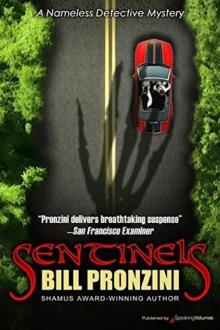 Sentinels
Sentinels The Peaceful Valley Crime Wave
The Peaceful Valley Crime Wave Hardcase
Hardcase Bleeders
Bleeders Demons
Demons The Pillars of Salt Affair
The Pillars of Salt Affair Epitaphs
Epitaphs Spook
Spook Hoodwink
Hoodwink Bug-Eyed Monsters
Bug-Eyed Monsters Endgame--A Nameless Detective Novel
Endgame--A Nameless Detective Novel The Hidden
The Hidden The Paradise Affair
The Paradise Affair Oddments
Oddments Boobytrap
Boobytrap Blue Lonesome
Blue Lonesome Scenarios - A Collection of Nameless Detective Stories
Scenarios - A Collection of Nameless Detective Stories Breakdown
Breakdown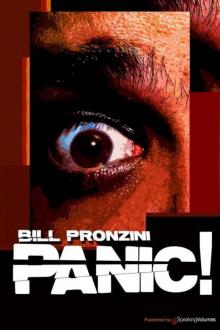 Panic!
Panic! The Bags of Tricks Affair
The Bags of Tricks Affair Quicksilver (Nameless Detective)
Quicksilver (Nameless Detective) Hellbox (Nameless Detective)
Hellbox (Nameless Detective) Nightcrawlers nd-30
Nightcrawlers nd-30 Zigzag
Zigzag The Jade Figurine
The Jade Figurine The Stolen Gold Affair
The Stolen Gold Affair The Stalker
The Stalker The Lighthouse
The Lighthouse Fever nd-33
Fever nd-33 Nightshades (Nameless Detective)
Nightshades (Nameless Detective) Scattershot nd-8
Scattershot nd-8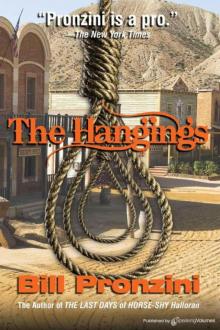 The Hangings
The Hangings Mourners: A Nameless Detective Novel (Nameless Detective Mystery)
Mourners: A Nameless Detective Novel (Nameless Detective Mystery) Graveyard Plots
Graveyard Plots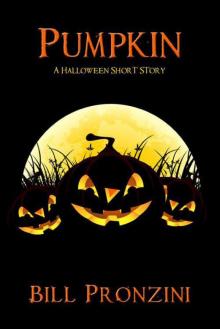 Pumpkin
Pumpkin Schemers nd-34
Schemers nd-34 The Bughouse Affair q-2
The Bughouse Affair q-2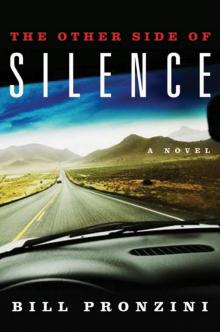 The Other Side of Silence
The Other Side of Silence Savages: A Nameless Detective Novel (Nameless Detective Novels)
Savages: A Nameless Detective Novel (Nameless Detective Novels) Crazybone
Crazybone Schemers: A Nameless Detective Novel (Nameless Detective Novels)
Schemers: A Nameless Detective Novel (Nameless Detective Novels) Gun in Cheek
Gun in Cheek In an Evil Time
In an Evil Time Son of Gun in Cheek
Son of Gun in Cheek Camouflage (Nameless Detective Mysteries)
Camouflage (Nameless Detective Mysteries)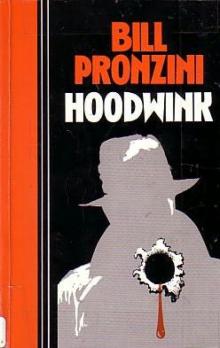 Hoodwink nd-7
Hoodwink nd-7 With an Extreme Burning
With an Extreme Burning Vixen
Vixen More Oddments
More Oddments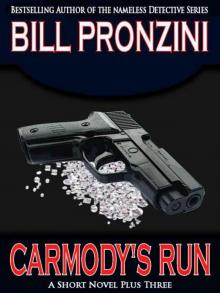 Carmody's Run
Carmody's Run Small Felonies - Fifty Mystery Short Stories
Small Felonies - Fifty Mystery Short Stories Labyrinth (The Nameless Detective)
Labyrinth (The Nameless Detective) Jackpot (Nameless Dectective)
Jackpot (Nameless Dectective) Case File - a Collection of Nameless Detective Stories
Case File - a Collection of Nameless Detective Stories Undercurrent nd-3
Undercurrent nd-3 Betrayers (Nameless Detective Novels)
Betrayers (Nameless Detective Novels) Deadfall (Nameless Detective)
Deadfall (Nameless Detective) Bones nd-14
Bones nd-14 The Snatch nd-1
The Snatch nd-1 Bindlestiff nd-10
Bindlestiff nd-10 Blowback nd-4
Blowback nd-4 A Wasteland of Strangers
A Wasteland of Strangers Double
Double The Bags of Tricks Affair--A Carpenter and Quincannon Mystery
The Bags of Tricks Affair--A Carpenter and Quincannon Mystery Quarry
Quarry Nameless 08 Scattershot
Nameless 08 Scattershot Mourners nd-31
Mourners nd-31 The Vanished
The Vanished Savages nd-32
Savages nd-32 Quincannon jq-1
Quincannon jq-1 Hellbox nd-37
Hellbox nd-37 The Crimes of Jordan Wise
The Crimes of Jordan Wise Bones (The Nameless Detecive)
Bones (The Nameless Detecive) Nothing but the Night
Nothing but the Night Camouflage nd-36
Camouflage nd-36 Pumpkin 1doh-9
Pumpkin 1doh-9 Blowback (The Nameless Detective)
Blowback (The Nameless Detective) Give-A-Damn Jones: A Novel of the West
Give-A-Damn Jones: A Novel of the West Shackles
Shackles The Violated
The Violated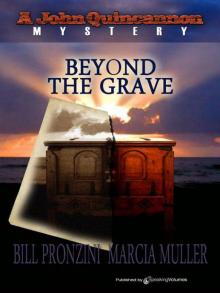 Beyond the Grave jq-2
Beyond the Grave jq-2![The Vanished - [Nameless Detective 02] Read online](http://i1.bookreadfree.com/i2/04/10/the_vanished_-_nameless_detective_02_preview.jpg) The Vanished - [Nameless Detective 02]
The Vanished - [Nameless Detective 02] Quincannon
Quincannon Undercurrent (The Nameless Detective)
Undercurrent (The Nameless Detective) Step to the Graveyard Easy
Step to the Graveyard Easy Nightcrawlers: A Nameless Detective Novel (Nameless Detective Mystery)
Nightcrawlers: A Nameless Detective Novel (Nameless Detective Mystery) The Eye: A Novel of Suspense
The Eye: A Novel of Suspense Betrayers nd-35
Betrayers nd-35 Quicksilver nd-11
Quicksilver nd-11 Acts of Mercy
Acts of Mercy Breakdown nd-18
Breakdown nd-18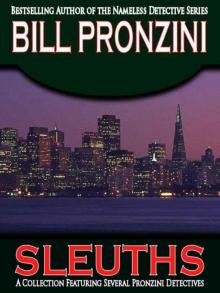 Sleuths
Sleuths![The Snatch - [Nameless Detective 01] Read online](http://i1.bookreadfree.com/i2/04/07/the_snatch_-_nameless_detective_01_preview.jpg) The Snatch - [Nameless Detective 01]
The Snatch - [Nameless Detective 01] Scenarios nd-29
Scenarios nd-29 Nightshades nd-12
Nightshades nd-12 Snowbound
Snowbound Deadfall nd-15
Deadfall nd-15 Bindlestiff (The Nameless Detective)
Bindlestiff (The Nameless Detective) Fever: A Nameless Detective Novel (Nameless Detective Novels)
Fever: A Nameless Detective Novel (Nameless Detective Novels)